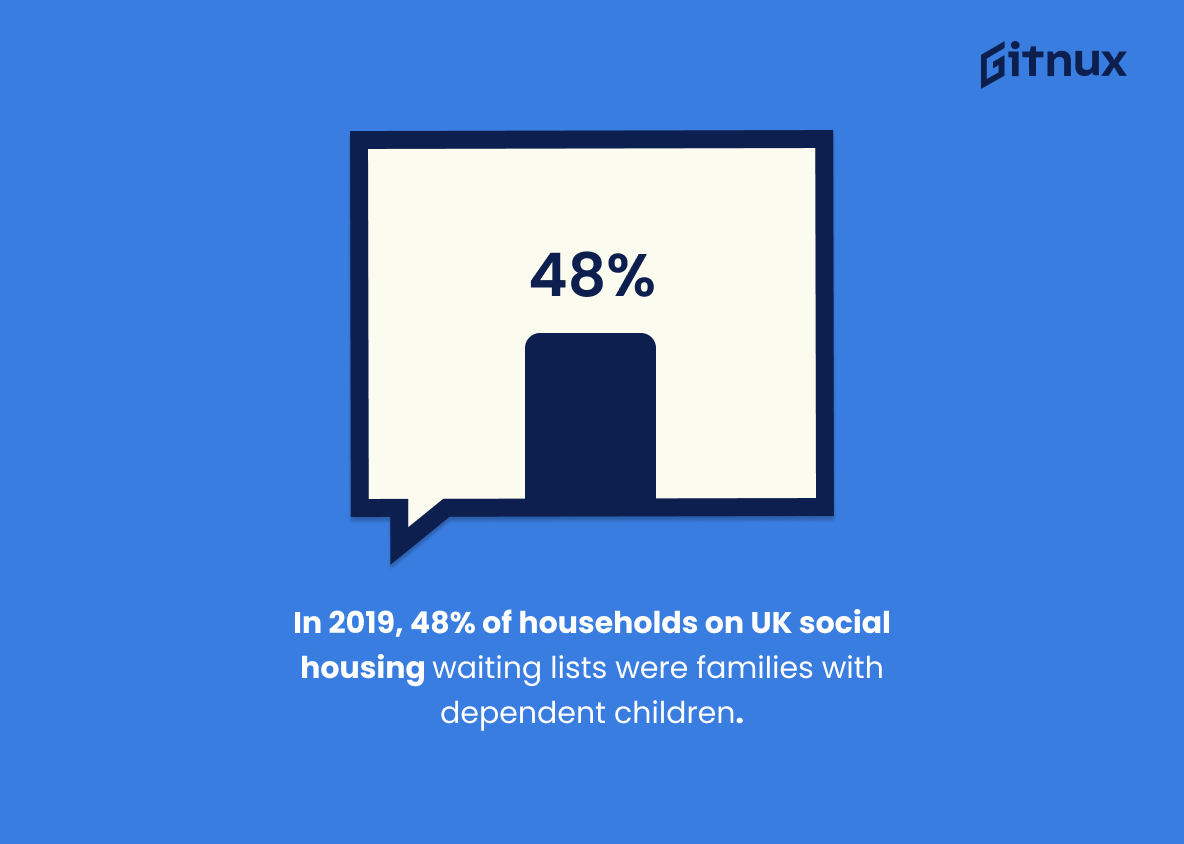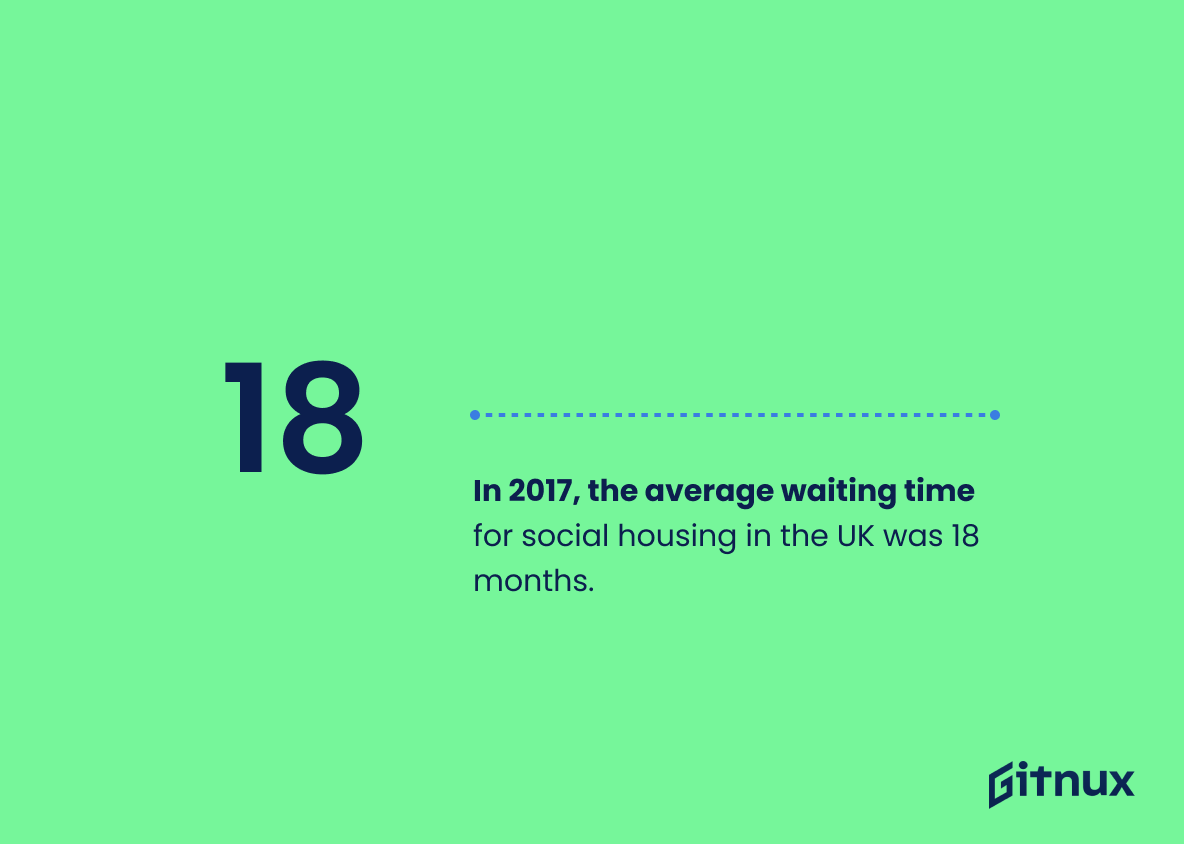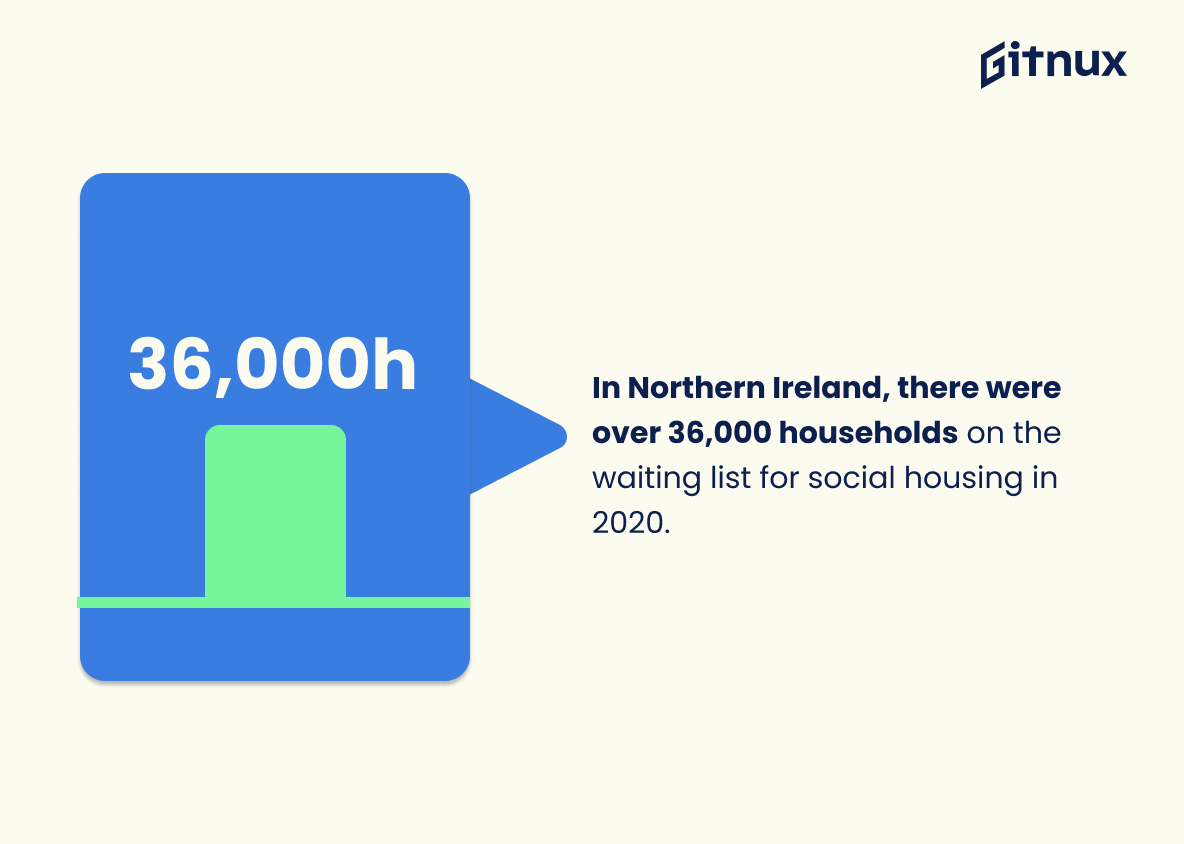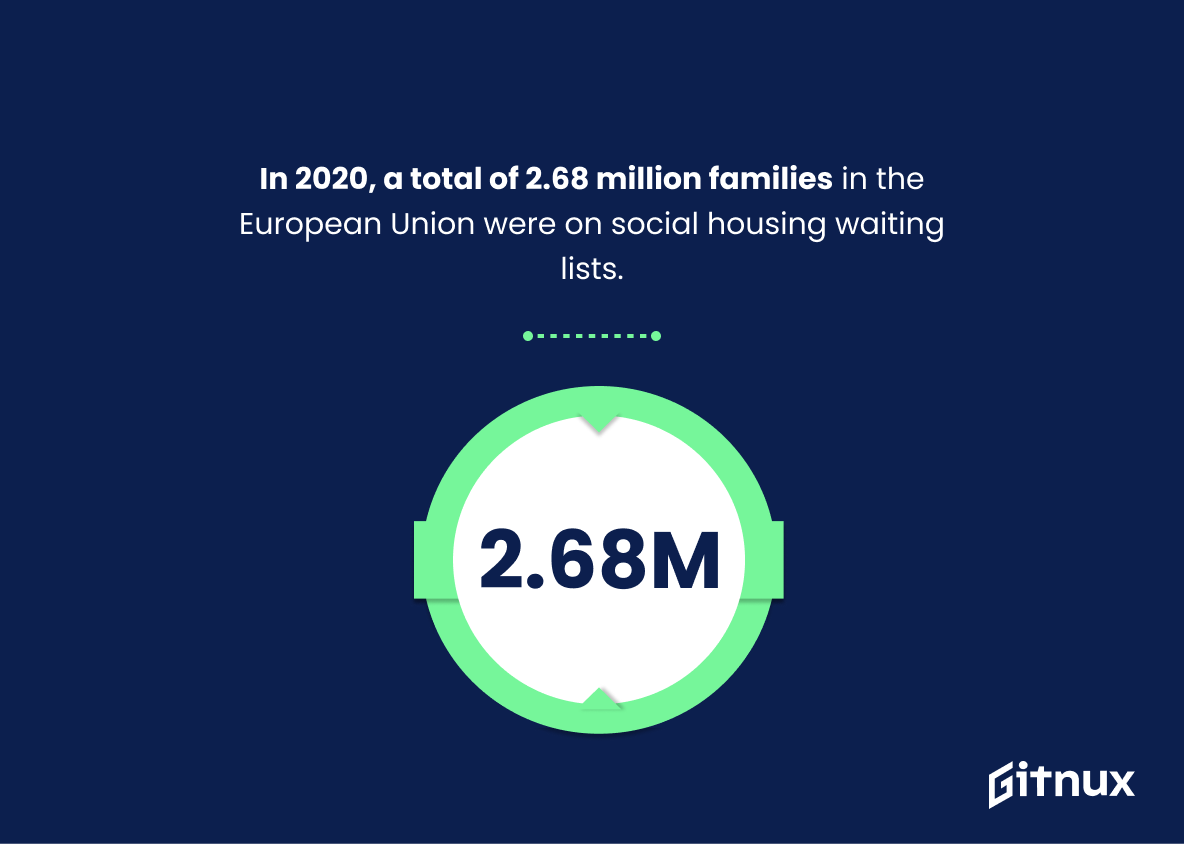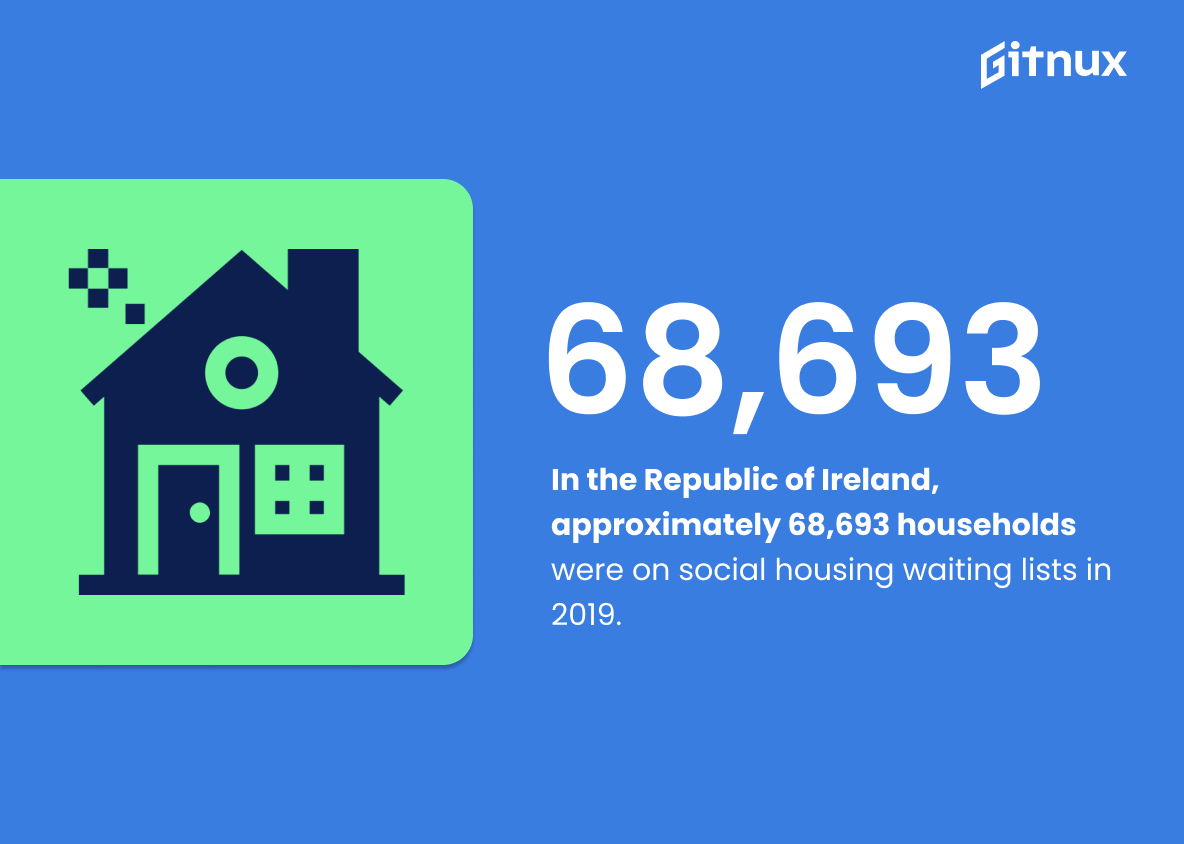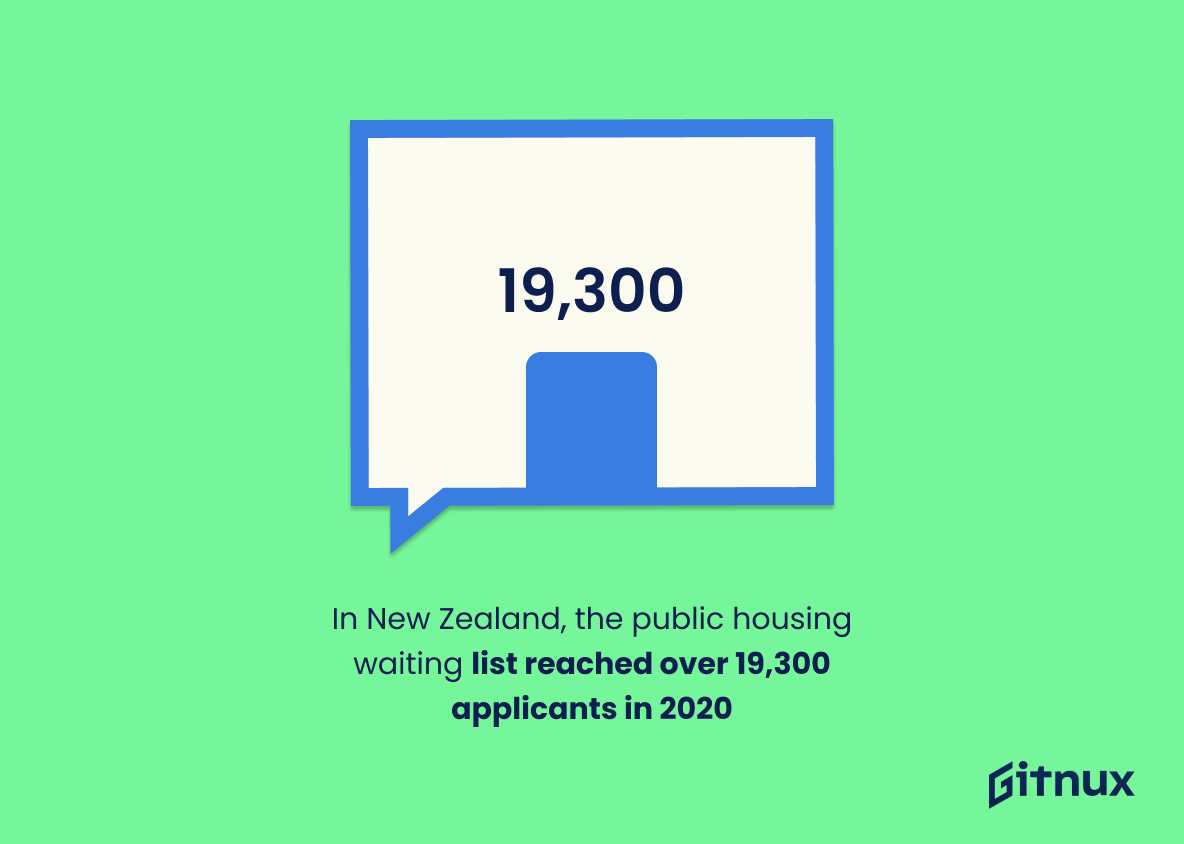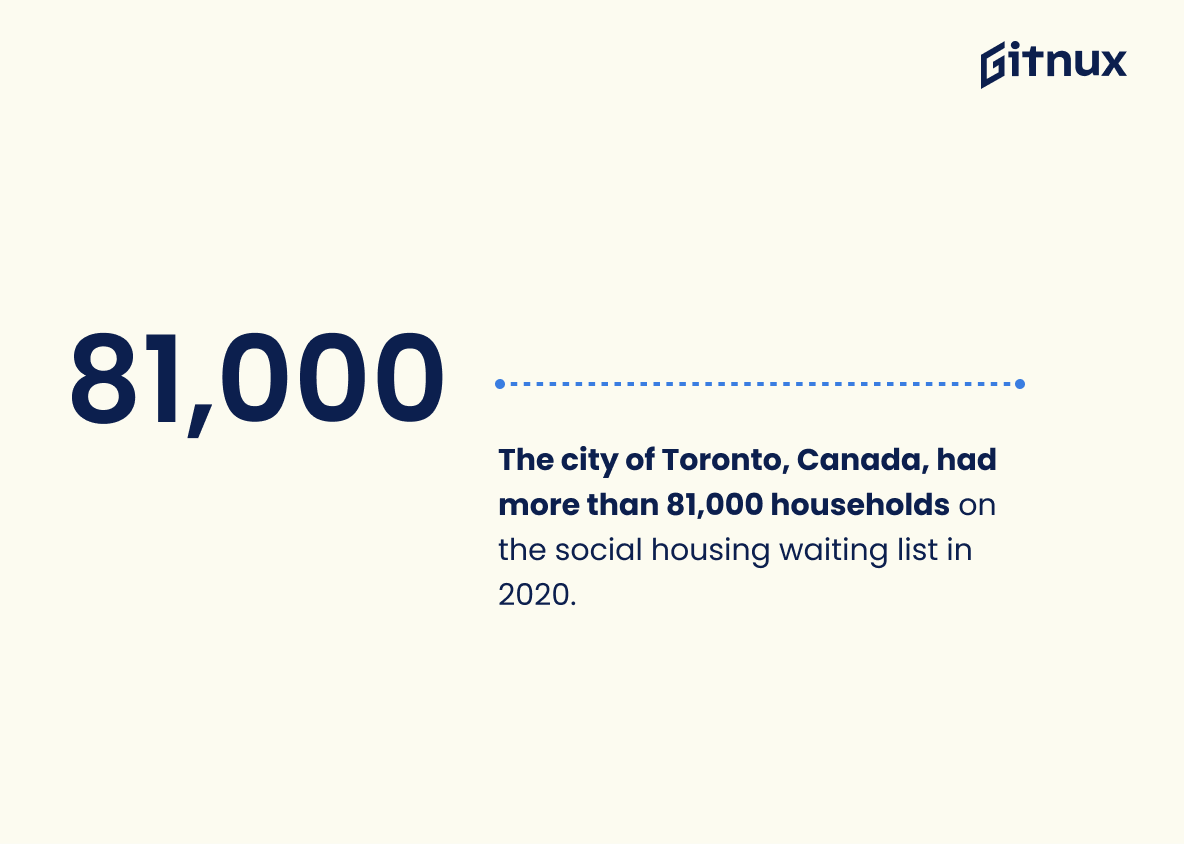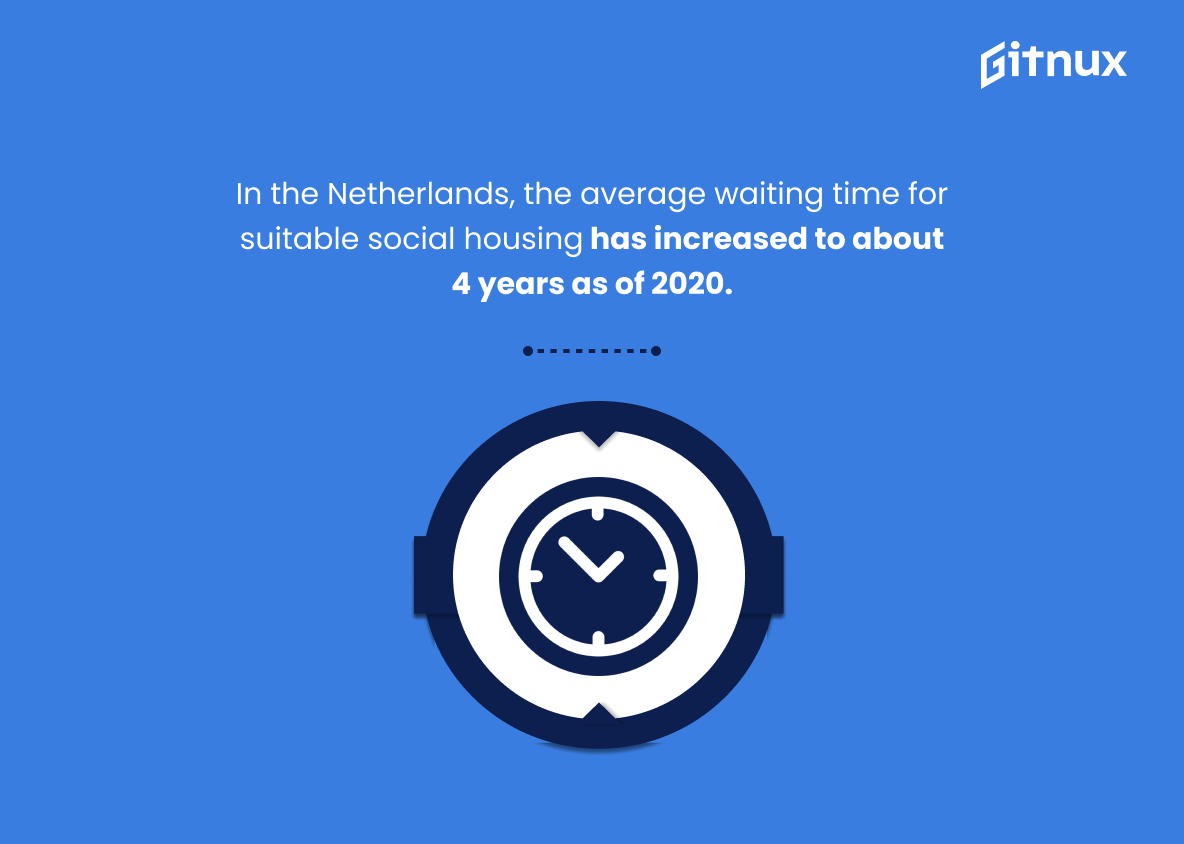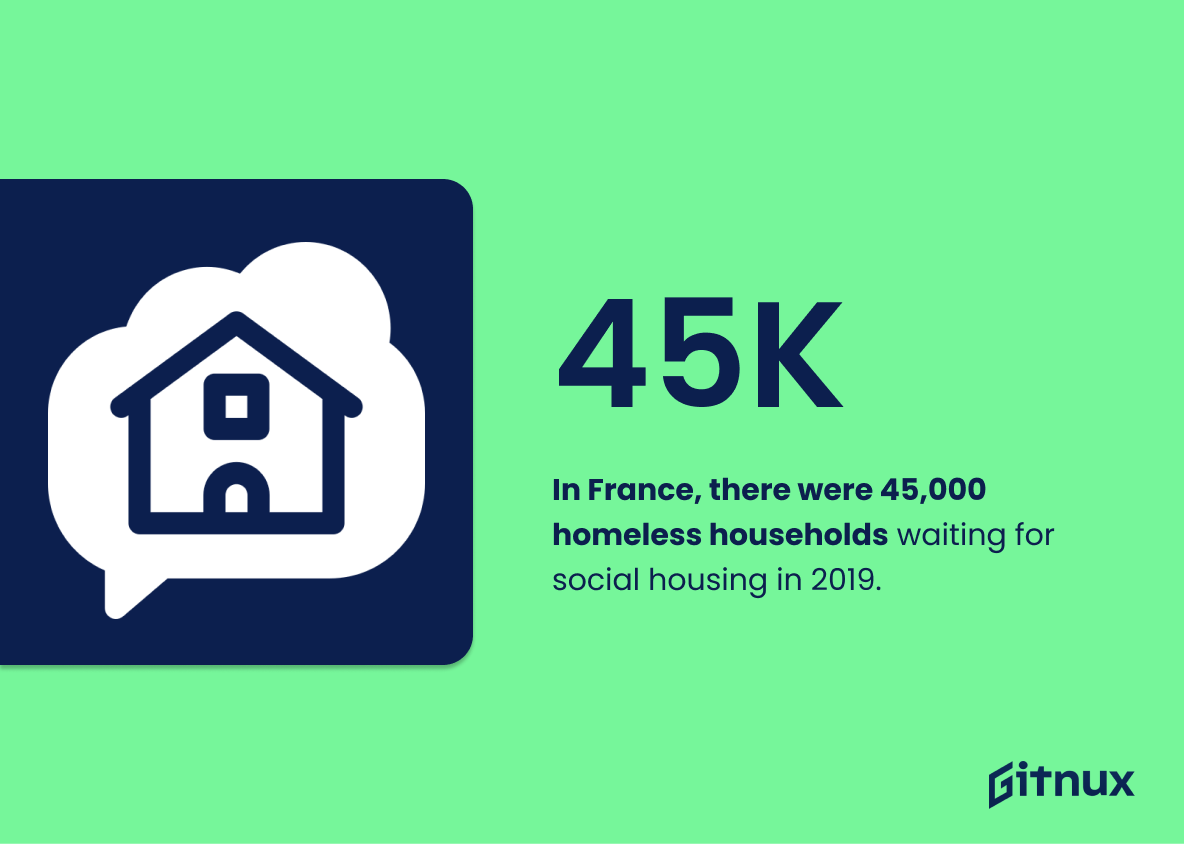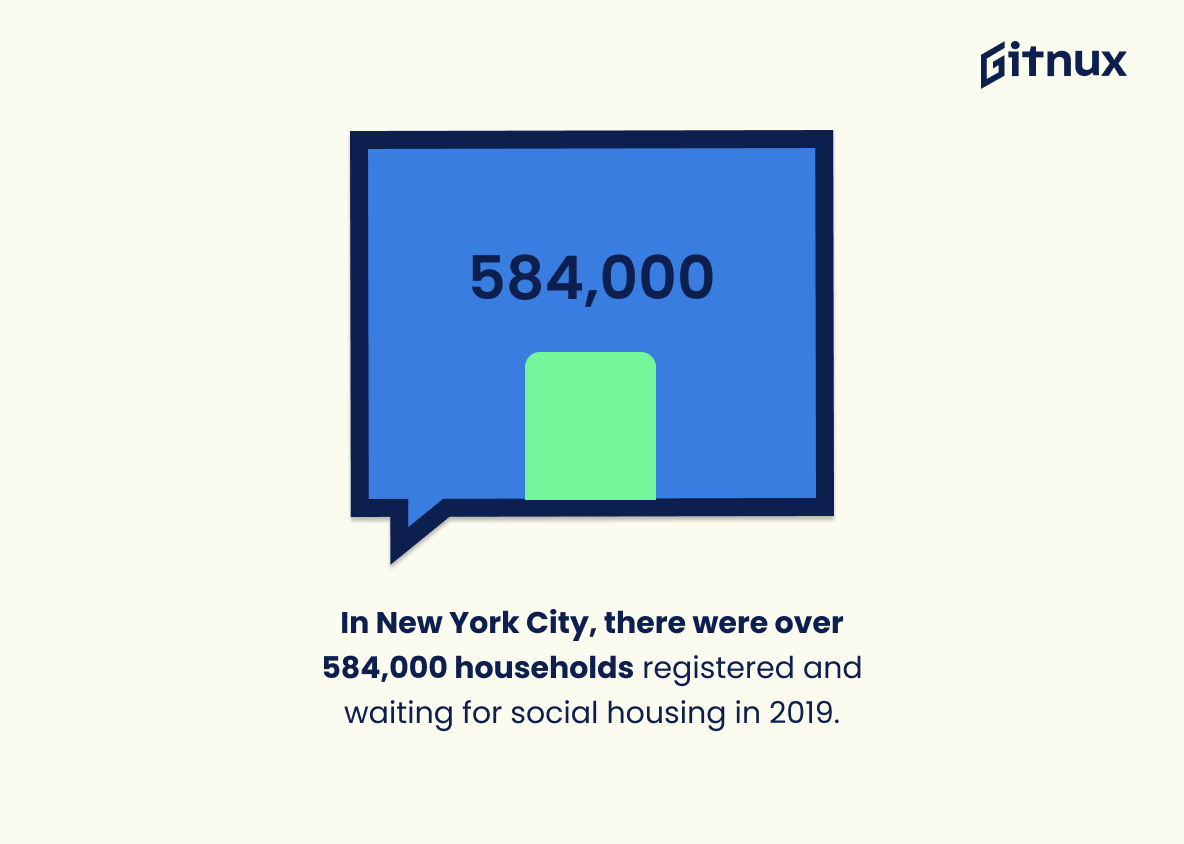The social housing waiting list is a growing problem in many countries around the world. In England, there were over 1.2 million households on social housing waiting lists in 2021; Scotland had 164,000 households on its list in 2020; Wales saw approximately 67,000 households registered for social housing in 2019; and London reported almost 250,000 households on its waiting list for social housing last year.
In addition to these figures from the UK alone, other European Union countries such as France (45 000 homeless) and Norway (17 248 applicants) also have large numbers of people awaiting access to suitable accommodation through their respective governments’ public or municipal schemes. Across Europe as a whole 2.68 million families are currently listed as being without adequate shelter due to long wait times associated with accessing affordable homes via government-funded programs – an issue that has been further exacerbated by the COVID-19 pandemic this past year.
Outside of Europe too we can see similar trends: Australia recorded 194 000 applications while Canada’s largest city Toronto had 81 000 individuals seeking assistance at one point during 2020 – both significantly higher than pre-pandemic levels seen just 12 months prior. Even smaller nations like Estonia still face challenges when it comes to providing enough safe and secure dwellings for those who need them most with 1 700 citizens having applied for help back in 2019 according to official statistics released by local authorities there at the time..
Social Housing Waiting Lists Statistics Overview
In London, almost 250,000 households were on waiting lists for social housing in 2020.
This statistic is a stark reminder of the immense need for social housing in London. It highlights the fact that, despite the best efforts of the government, there are still hundreds of thousands of households in the capital who are unable to access the housing they need. This statistic serves as a call to action, urging us to do more to ensure that everyone in London has access to safe and secure housing.
In 2019, 48% of households on UK social housing waiting lists were families with dependent children.
This statistic is a stark reminder of the reality of social housing waiting lists in the UK – that nearly half of households on the list are families with dependent children. This highlights the urgent need for more social housing to be made available, as these families are in desperate need of a secure and affordable home.
In 2017, the average waiting time for social housing in the UK was 18 months.
This statistic is a stark reminder of the reality of the social housing waiting list crisis in the UK. It highlights the fact that, despite the best efforts of the government, many people are still waiting an average of 18 months for a place to call home. This statistic serves as a call to action, urging us to take steps to reduce the waiting time and ensure that everyone has access to safe and secure housing.
In Northern Ireland, there were over 36,000 households on the waiting list for social housing in 2020.
This statistic is a stark reminder of the dire need for social housing in Northern Ireland. It highlights the sheer number of households that are struggling to find a safe and secure place to call home. It is a call to action for the government to take steps to address the issue and ensure that everyone has access to affordable housing.
In 2020, a total of 2.68 million families in the European Union were on social housing waiting lists.
This statistic is a stark reminder of the immense need for social housing in the European Union. It paints a vivid picture of the millions of families who are struggling to find a safe and secure place to call home. It highlights the urgency of the situation and the need for governments to take action to address the issue.
In the Republic of Ireland, approximately 68,693 households were on social housing waiting lists in 2019.
This statistic is a stark reminder of the reality of social housing waiting lists in the Republic of Ireland. It highlights the sheer number of households in need of social housing, and the urgent need for more social housing to be made available. It serves as a call to action for the government to take steps to address the issue and ensure that those in need of social housing are able to access it.
In New Zealand, the public housing waiting list reached over 19,300 applicants in 2020.
This statistic is a stark reminder of the immense need for social housing in New Zealand. It highlights the fact that despite the government’s efforts to provide housing for those in need, the demand far exceeds the supply. This statistic serves as a call to action for the government to take further steps to address the housing crisis in the country.
The city of Toronto, Canada, had more than 81,000 households on the social housing waiting list in 2020.
This statistic is a stark reminder of the dire need for social housing in Toronto, Canada. It highlights the fact that despite the city’s efforts to provide housing for those in need, there are still tens of thousands of households waiting for a place to call home. This statistic serves as a call to action for the city to take further steps to address the issue of social housing waiting lists.
In British Columbia, Canada, there were over 22,100 households on social housing waiting lists in 2019.
This statistic paints a vivid picture of the reality of social housing waiting lists in British Columbia, Canada. It highlights the sheer number of households in need of social housing, and the urgency of the situation. It serves as a stark reminder of the importance of addressing the issue of social housing waiting lists in the province.
In the Netherlands, the average waiting time for suitable social housing has increased to about 4 years as of 2020.
This statistic is a stark reminder of the growing demand for social housing in the Netherlands. It highlights the need for more housing to be made available to those who are in need, as the current waiting time of four years is far too long for those who are struggling to find a place to live. This statistic is a call to action for those in power to take steps to reduce the waiting time and ensure that everyone has access to suitable housing.
In France, there were 45,000 homeless households waiting for social housing in 2019.
This statistic paints a stark picture of the reality of homelessness in France. It highlights the urgent need for social housing, and the immense pressure on the system to provide it. It serves as a reminder of the importance of social housing in providing a safe and secure home for those in need.
In New York City, there were over 584,000 households registered and waiting for social housing in 2019.
This statistic is a stark reminder of the immense need for social housing in New York City. It paints a vivid picture of the sheer number of households that are struggling to find affordable housing and are in desperate need of assistance. It serves as a powerful reminder of the importance of social housing and the need for more resources to be allocated to this cause.
Conclusion
The statistics presented in this blog post demonstrate the widespread need for social housing across many countries. In England, Scotland, Wales and London alone there are over 1.6 million households on waiting lists for social housing. This is further compounded by a 48% proportion of families with dependent children who are also seeking assistance from these services. The average wait time for suitable accommodation varies between 18 months in the UK to 4 years in the Netherlands, while some cities such as New York City have an astonishing 584,000 people registered and waiting for help with their housing needs. These figures show that despite efforts being made around Europe and beyond to provide more affordable homes through public or subsidised schemes, demand continues to outstrip supply – highlighting how much work still needs to be done if we want everyone to have access safe and secure shelter they can call home.
References
0. – https://www.comptroller.nyc.gov
1. – https://www.www.ons.gov.uk
2. – https://www.www.resolutionfoundation.org
3. – https://www.ec.europa.eu
4. – https://www.www.bchousing.org
5. – https://www.www.sfha.co.uk
6. – https://www.www.vie-publique.fr
7. – https://www.gov.wales
8. – https://www.www.communities-ni.gov.uk
9. – https://www.www.london.gov.uk
10. – https://www.www.toronto.ca
11. – https://www.www.hud.govt.nz
12. – https://www.www.housing.gov.ie
13. – https://www.www.woonbond.nl

